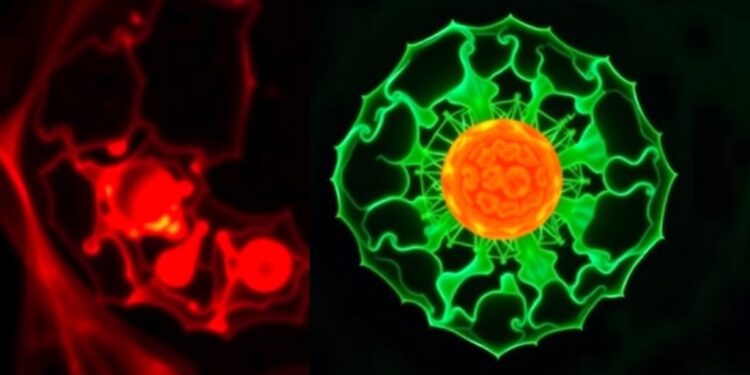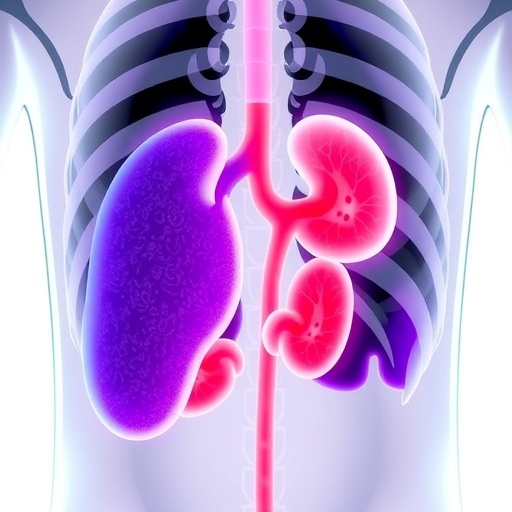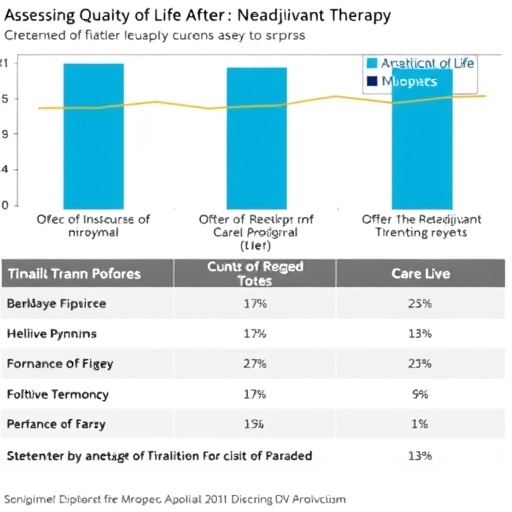
Ovarian cancer (OC) is notorious for being the most aggressive form of gynecological malignancy, accounting for the fifth highest number of cancer-related deaths among women globally. The struggle against ovarian cancer presents significant challenges, such as recurrence following treatment and the ability of tumor cells to spread beyond their original location, a process known as metastasis. These complexities underscore the need for an in-depth understanding of the underlying mechanisms that contribute to OC’s aggressive nature, as well as the ongoing development of innovative therapeutic strategies aimed at combating this relentless disease.
Recent research conducted by a collaborative team from multiple prestigious institutions, including Tongji University School of Medicine and Shanghai Jiaotong University School of Medicine, sheds light on a pivotal aspect of OCs’ tumor microenvironment: peritoneal adipose-derived stem cells (ADSCs). These cells have been identified as significant players in the advancement of OC metastasis. By isolating both adipocytes and ADSCs from OC patients, the researchers revealed critical distinctions in their roles within the tumor milieu, finding that ADSCs were far more effective in enhancing both the proliferation and migration of ovarian cancer cells compared to adipocytes.
Central to the research findings was the role of the epidermal growth factor (EGF), a potent growth factor secreted specifically by ADSCs. The study demonstrated that EGF exhibited a dramatically stronger influence on OC cell behavior, surpassing that of leptin, a well-known cytokine released by adipocytes. This revelation points to a potentially significant pathway through which ADSCs facilitate the growth and spread of ovarian cancer, signaling the need for further investigation into the molecular interactions at play.
In an effort to unpack the complex communication between ADSCs and OC cells, transcriptome analysis was employed. This analysis illuminated the importance of extracellular vesicles (EVs) as mediators of long-range signaling between these cell types. The study uncovered that ADSCs-derived EVs harbored crucial signaling molecules, including EGF and epidermal growth factor receptor (EGFR). Upon fusion with OC cells, these EVs were found to activate key tumorigenic pathways, most notably the EGFR-NF-κB signaling axis, a pathway recognized for its central role in mediating inflammatory responses, immune regulation, and cancer progression.
The implications of these findings are profound. The researchers identified that inhibiting the production of ADSC-EVs using the small molecule inhibitor GW4869, or by employing short hairpin RNAs (shRNAs) to knock down EGFR expression, effectively curtailed the proliferation and migratory capacity of OC cells driven by ADSC-EVs. This pivotal discovery proposes that targeting the communication facilitated by EVs between ADSCs and OC cells could offer a groundbreaking therapeutic route in efforts to mitigate OC metastasis.
Operative solutions to the challenges presented by ovarian cancer are urgently needed, given its prevalence and the alarming mortality rates associated with advanced stages of the disease. The researchers emphasize the necessity for further in vivo studies to clarify the contributions of peritoneal ADSC-derived EVs in the progression, metastasis, and potential drug resistance of OC. These future investigations aim to build on the current findings, translating the promising potential of EV targeting into tangible treatment options.
The novel insights provided by this study initiate an exciting dialogue regarding the complex interplay between tumor microenvironments and cancer cell biology. By aggressively pursuing the mechanisms by which ADSCs influence OC behavior, researchers may pave the way for the development of therapies that effectively disrupt traditional tumor support systems, thereby enhancing the prognosis for patients diagnosed with this challenging malignancy.
Importantly, the collective research highlights that targeting the stromal components of the tumor microenvironment, particularly ADSCs, could unlock a new dimension of ovarian cancer therapies. This focus on tumor-supportive stroma represents a paradigm shift in cancer treatment, encouraging an integrated approach that combines targeting cancer cells with disrupting their supportive microenvironments.
As advancements in molecular and translational medicine continue to evolve, the understanding of tumor-stromal interactions becomes increasingly critical in combating ovarian cancer. The intricate details revealed in this study not only underscore the significance of basic research in uncovering the nuances of cancer biology but also offer pathways for translational research initiatives aiming to develop more effective, personalized therapy regimens.
The journey to unraveling the complexities of ovarian cancer is ongoing, and the quest for solutions will undoubtedly lead to more questions. Yet, each finding, such as those elucidated in this recent study, provides invaluable insights that could very well shift the landscape of ovarian cancer treatment and improve patient outcomes in the future.
As we look ahead, the collaboration and continued research from leading medical institutions around the world will be vital in addressing the formidable challenge that ovarian cancer poses. With the foundational research presented, there is hope that new therapeutics targeting the cellular communication pathways might not only stall the progression of ovarian cancer but also enhance survival rates and quality of life for those affected by this notorious illness.
The fusion of scientific inquiry and clinical application underscores the pivotal role of ongoing research in the fight against ovarian cancer. This focus on harnessing the unique characteristics of tumor microenvironments, coupled with a mechanistic understanding of related cellular signaling pathways, stands as a beacon of hope in the development of transformative cancer therapies.
Subject of Research: The role of peritoneal adipose-derived stem cells in ovarian cancer metastasis.
Article Title: Peritoneal adipose stem cell-derived extracellular vesicles mediate the regulation of ovarian cancer cell proliferation and migration through EGFR-NF-κB signaling
News Publication Date: October 2023
Web References: Genes & Diseases
References: Genes & Diseases Journal, doi: 10.1016/j.gendis.2024.101283
Image Credits: N/A
Keywords: Ovarian cancer, adipose-derived stem cells, extracellular vesicles, EGFR signaling, metastasis, cancer therapy.
Tags: adipose-derived stem cell researchcancer cell proliferation mechanismscancer-related mortality in womenEGFR-NF-κB signaling pathwayextracellular vesicles in cancergynecological malignanciesinnovative therapeutic strategies for cancermetastasis of ovarian cancerovarian cancer progressionperitoneal adipose stem cellsrole of growth factors in cancertumor microenvironment in OC





